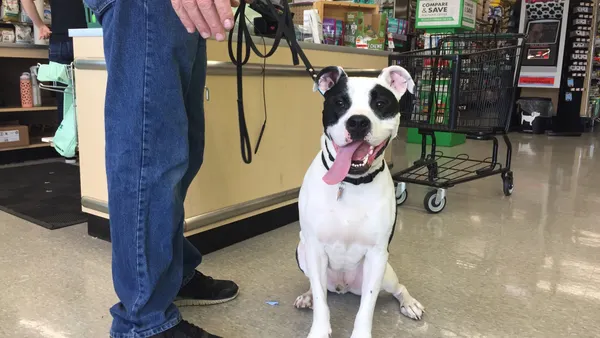It's a swiftly evolving retail world, where department stores grapple with reinvention, direct-to-consumer startups proliferate and even top brands like Nike fuel direct sales on marketplaces. It's tempting to see the traditional retail buyer as an endangered creature.
Shoppers are now doing half of their online spending through marketplaces, and that could rise to two-thirds in five years, according to a report last year from Forrester Research. That diminishment of the middleman has prompted retail gurus like Doug Stephens, author of "Reengineering Retail: The Future of Selling in a Post-Digital World," to proclaim that "the future of retail is the end of wholesale."
But there's still plenty of action in the middle, others say, thanks in part to technology that has improved speed-to-market and customization. As a result, the retail buyer is better equipped than ever, for example, to stock shelves with the right merchandise.
"[Wholesale is] not going anywhere," Kristin Savilia, CEO of wholesale platform Joor, said in an interview with Retail Dive. "In fact there's a very strong move of pure-players doing stores. Direct-to-customer is a very expensive endeavor for brands, in part because e-commerce is more expensive than stores. A lot of brands are just not capable. In the age of Amazon, if you’re not doing one-day shipping or two-day shipping, what are you doing?"
Less is better
Thanks to mobile-first systems, ordering capabilities nowadays allow for transparent inventory, customization, development of exclusive designs, budget tracking and image-rich communication — all of which empower wholesalers.
Joor is a privately owned company that doesn't share sales numbers, but Savilia said last year the company had gross merchandise volume of $6 billion. The numbers are building because these platforms enable buyers to flex their creativity as they spot promising designs and anticipate trends they believe will resonate with customers, according to Joor and rival NuOrder. Retailers are also better equipped to respond to local and regional preferences by more easily matching assortments to differentiated sales trends, according to Danny Essner, NuOrder senior vice president of marketing.
"Tech has come and revolutionized the process, and made that relationship much more collaborative," Essner told Retail Dive in an interview. "That really savvy buyer, she’s discovering trends in Paris, she sees what people are wearing in New York, she's still working with the sales rep at the brand she wants to buy on how products work together in an assortment. That sales rep is as important if not more important than ever, and they can work in real time and faster."
Trips around the globe to seek the latest styles are no longer mandatory.
"Smaller Main Street, USA boutiques who don’t have the budget to go to Paris do have access to high-res images, access to the brand network," said Savilia, who previously worked at Macy's and is familiar with retail buyer needs. "Whether you’re department store or a small boutique, when you discover new brands you can 'friend request' them and conduct business."
Amazon-proof
Last week, Joor announced that 90 activewear brands have joined its platform, an example of a rapidly shifting segment that is attracting retailers big and small, including yoga and Pilates studios that don't have extensive retail buying departments.
While selling online and in store was a complex proposition in the days of slow-moving, siloed B2C supply chain orders, wholesalers today are breaking down barriers to omnichannel, Essner said.
"From what we see across the landscape, we just don’t see 'the death of wholesale' happening any time soon, if ever," he said. "While it’s certainly true that brands have the opportunity to sell to customers directly more than ever — the concept of omnichannel is still the name of the game. Brands will continue to use wholesale as a way of getting their brand out there, getting their name out to new customers and driving sales to existing customers."
It's also fairly Amazon-proof because Joor's clients (which include 175,000 retailers, including 25 "big" ones that exclusively use its platform) aren't dealing in commoditized merchandise.
"The core of our business is luxury," she said. "If you read about Amazon, they're still selling a lot of low end apparel — we're not competing with them on underwear and socks. We truly believe that the merchant still runs key in buying."






















